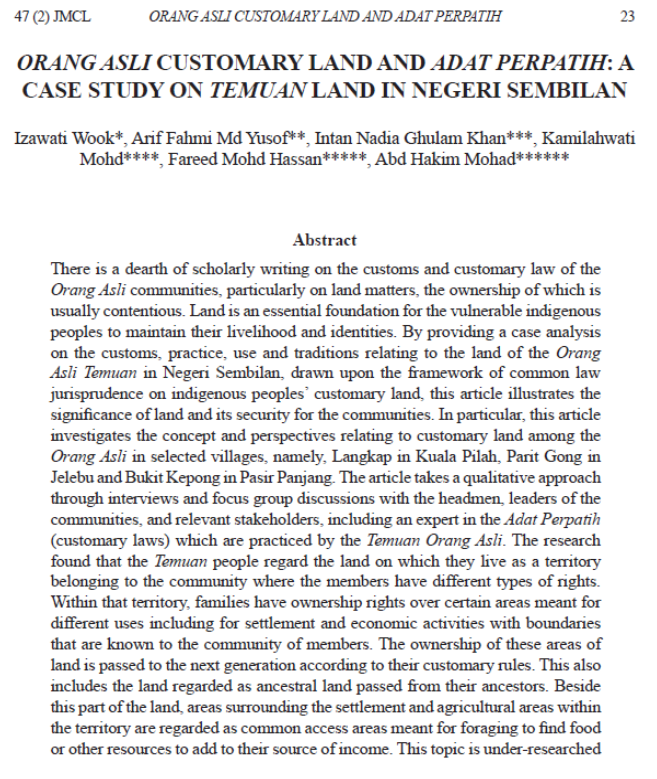Orang Asli Customary Land and Adat Perpatih
A Case Study on Temuan Land in Negeri Sembilan
Keywords:
Separation of powers, National Security Council Act 2016, National Security Council, Malaysia, NSC Act 2016Abstract
There is a dearth of scholarly writing on the customs and customary law of the Orang Asli communities, particularly on land matters, the ownership of which is usually contentious. Land is an essential foundation for the vulnerable indigenous peoples to maintain their livelihood and identities. By providing a case analysis on the customs, practice, use and traditions relating to the land of the Orang Asli Temuan in Negeri Sembilan, drawn upon the framework of common law jurisprudence on indigenous peoples’ customary land, this article illustrates the significance of land and its security for the communities. In particular, this article investigates the concept and perspectives relating to customary land among the Orang Asli in selected villages, namely, Langkap in Kuala Pilah, Parit Gong in Jelebu and Bukit Kepong in Pasir Panjang. The article takes a qualitative approach through interviews and focus group discussions with the headmen, leaders of the communities, and relevant stakeholders, including an expert in the Adat Perpatih (customary laws) which are practiced by the Temuan Orang Asli. The research found that the Temuan people regard the land on which they live as a territory belonging to the community where the members have different types of rights. Within that territory, families have ownership rights over certain areas meant for different uses including for settlement and economic activities with boundaries that are known to the community of members. The ownership of these areas of land is passed to the next generation according to their customary rules. This also includes the land regarded as ancestral land passed from their ancestors. Beside this part of the land, areas surrounding the settlement and agricultural areas within the territory are regarded as common access areas meant for foraging to find food or other resources to add to their source of income. This topic is under-researched yet vital for policy makers, decision-makers and the public in paving the way for greater protection of indigenous peoples’ lands.
Downloads



